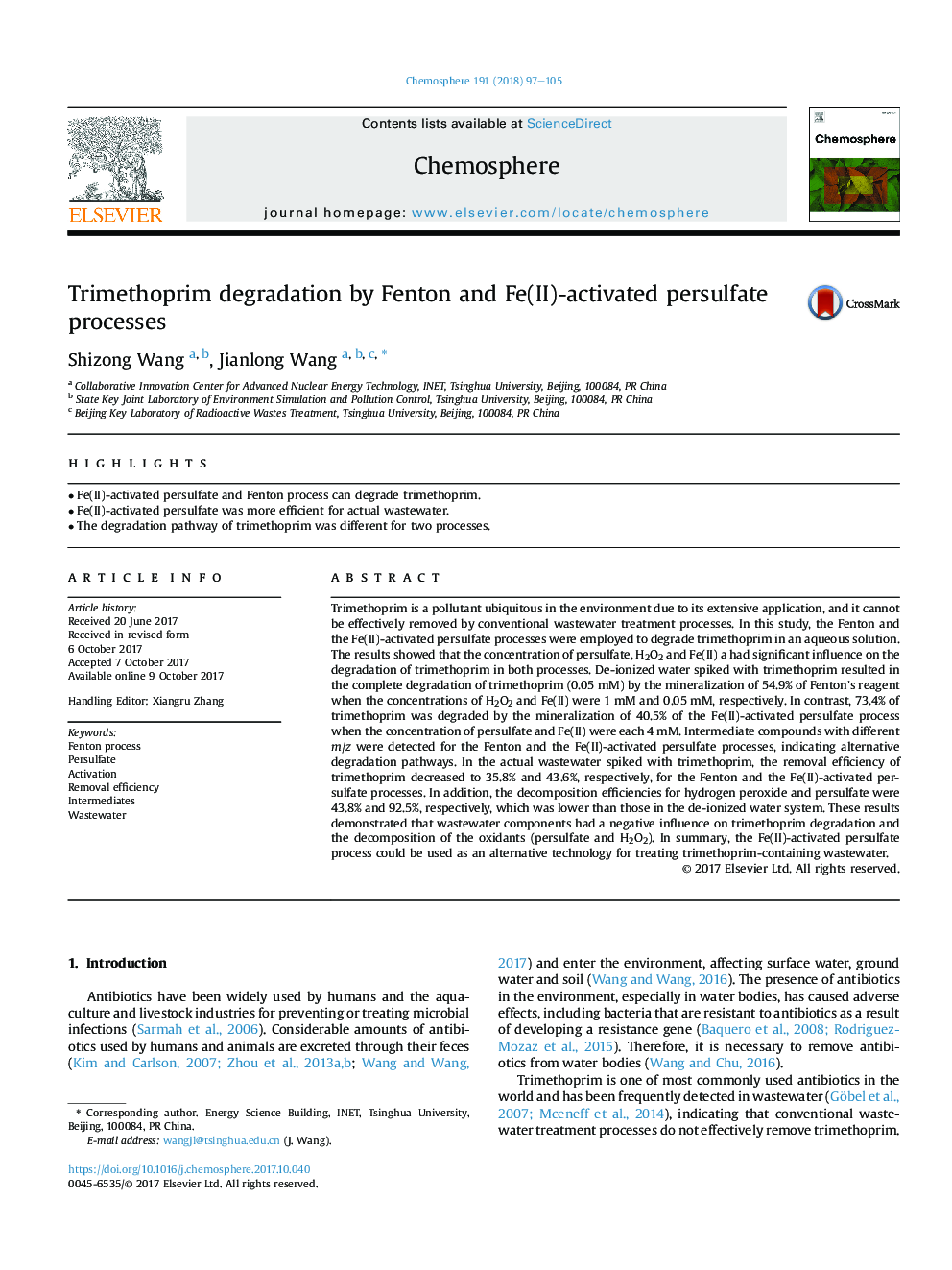| کد مقاله | کد نشریه | سال انتشار | مقاله انگلیسی | نسخه تمام متن |
|---|---|---|---|---|
| 5745720 | 1618780 | 2018 | 9 صفحه PDF | دانلود رایگان |

- Fe(II)-activated persulfate and Fenton process can degrade trimethoprim.
- Fe(II)-activated persulfate was more efficient for actual wastewater.
- The degradation pathway of trimethoprim was different for two processes.
Trimethoprim is a pollutant ubiquitous in the environment due to its extensive application, and it cannot be effectively removed by conventional wastewater treatment processes. In this study, the Fenton and the Fe(II)-activated persulfate processes were employed to degrade trimethoprim in an aqueous solution. The results showed that the concentration of persulfate, H2O2 and Fe(II) a had significant influence on the degradation of trimethoprim in both processes. De-ionized water spiked with trimethoprim resulted in the complete degradation of trimethoprim (0.05Â mM) by the mineralization of 54.9% of Fenton's reagent when the concentrations of H2O2 and Fe(II) were 1Â mM and 0.05Â mM, respectively. In contrast, 73.4% of trimethoprim was degraded by the mineralization of 40.5% of the Fe(II)-activated persulfate process when the concentration of persulfate and Fe(II) were each 4Â mM. Intermediate compounds with different m/z were detected for the Fenton and the Fe(II)-activated persulfate processes, indicating alternative degradation pathways. In the actual wastewater spiked with trimethoprim, the removal efficiency of trimethoprim decreased to 35.8% and 43.6%, respectively, for the Fenton and the Fe(II)-activated persulfate processes. In addition, the decomposition efficiencies for hydrogen peroxide and persulfate were 43.8% and 92.5%, respectively, which was lower than those in the de-ionized water system. These results demonstrated that wastewater components had a negative influence on trimethoprim degradation and the decomposition of the oxidants (persulfate and H2O2). In summary, the Fe(II)-activated persulfate process could be used as an alternative technology for treating trimethoprim-containing wastewater.
Journal: Chemosphere - Volume 191, January 2018, Pages 97-105